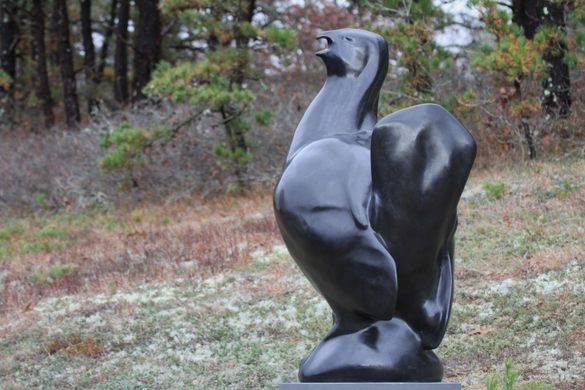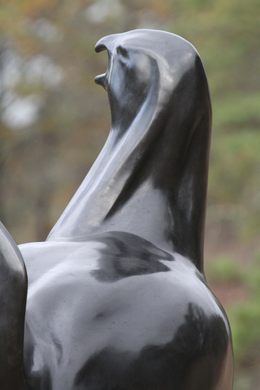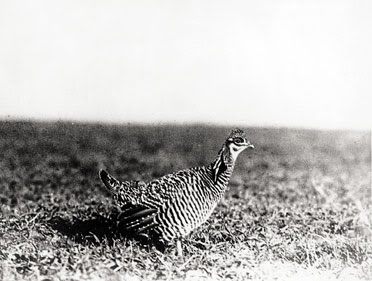Heath Hen Sculpture
A memorial sculpture to heath hens stands on the spot where the last heath hen, Booming Ben, was last seen.
Booming Ben, the last heath hen ever seen before the birds’ extinction, was last spotted near the airport on Martha’s Vineyard. Today, a sculpture of a heath hen memorializes the lost species at that very spot.
Heath hens were once very plentiful between New Hampshire and Virginia in the United States. They were also considered very good to eat, and were nearly extinct from being hunted by 1870. (It has been suggested that a heath hen, not a turkey, was consumed at the first Thanksgiving.)
The only heath hens left by 1870 were found on Martha’s Vineyard off the coast of Massachusetts. In 1908, a Heath Hen Reserve, now Manuel F. Correllus State Forest, was established for the last 70 hens. The species rallied briefly, its numbers eventually reaching 2,000, but a devastating forest fire, along with environmental challenges like severe winters and predators, reduced the population to just 12 or 13 birds by 1927. One of these stragglers, a male named Booming Ben, was last seen on March 11, 1932.
The heath hen is one of five birds sculpted as part of Todd McGrain’s Lost Birds Project. McGrain, a Guggenheim Fellow and artist in residence at the Cornell Lab of Ornithology, was already working on bird sculptures when he read Hope is the Thing with Feathers, Christopher Cokinos’s account of how several species of birds in North America went extinct. The Lost Bird Project also includes ceramic statues of a great auk, a Labrador duck, a passenger pigeon, and a Carolina parakeet.
Each statue was placed where its species was last seen. In the case of the heath hen, that was just off what is currently a bike path in Manuel F. Correllus State Forest. Traveling collections displaying all five bird sculptures can also be seen around the country.
Know Before You Go
Enter Gate 18 or Gate 19 from Edgartown Road, walk for five to ten minutes into the forest. The GPS coordinates will help you.
Community Contributors
Added by
Edited by
Plan Your Trip
The Atlas Obscura Podcast is Back!




















Follow us on Twitter to get the latest on the world's hidden wonders.
Like us on Facebook to get the latest on the world's hidden wonders.
Follow us on Twitter Like us on Facebook